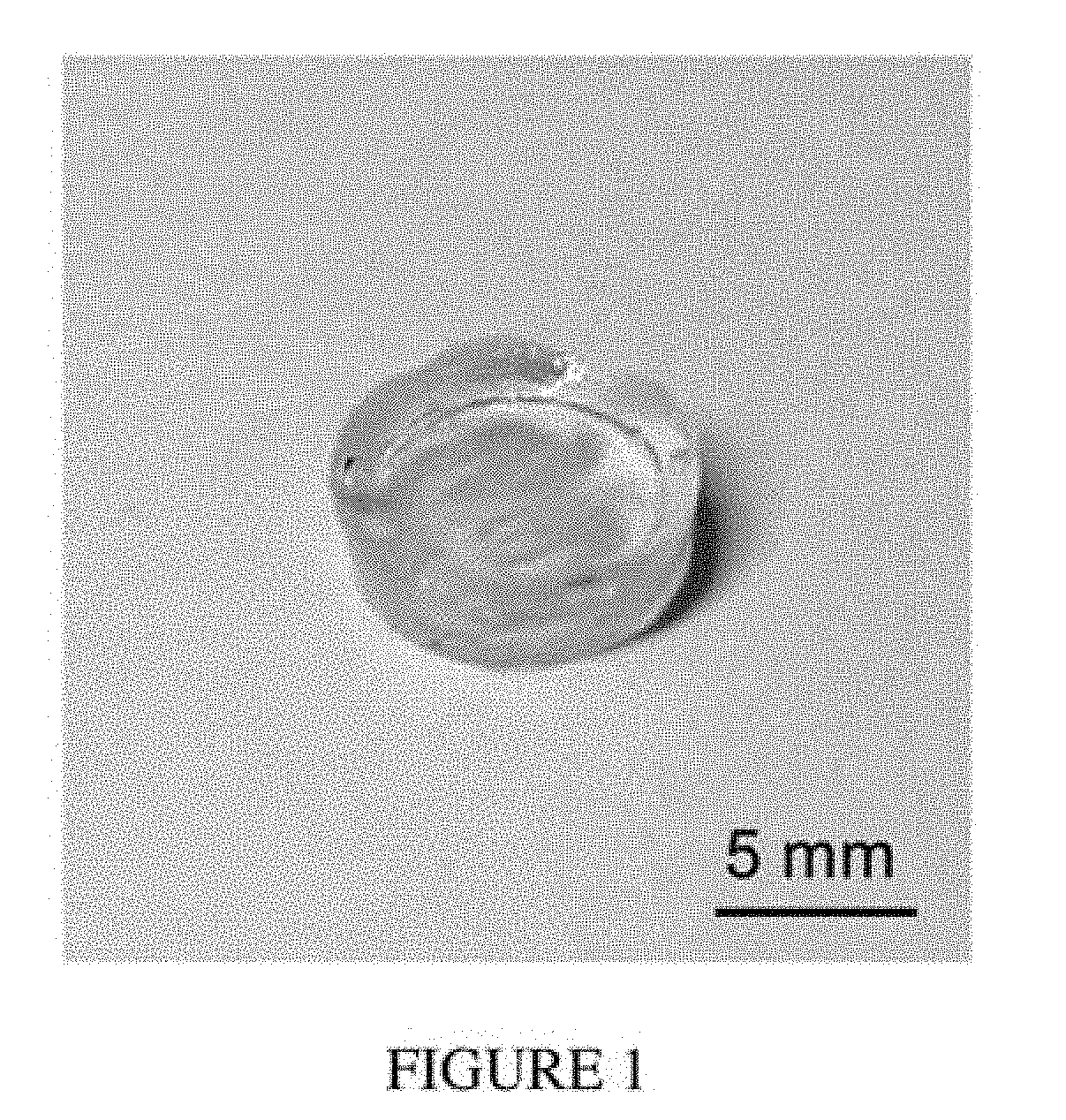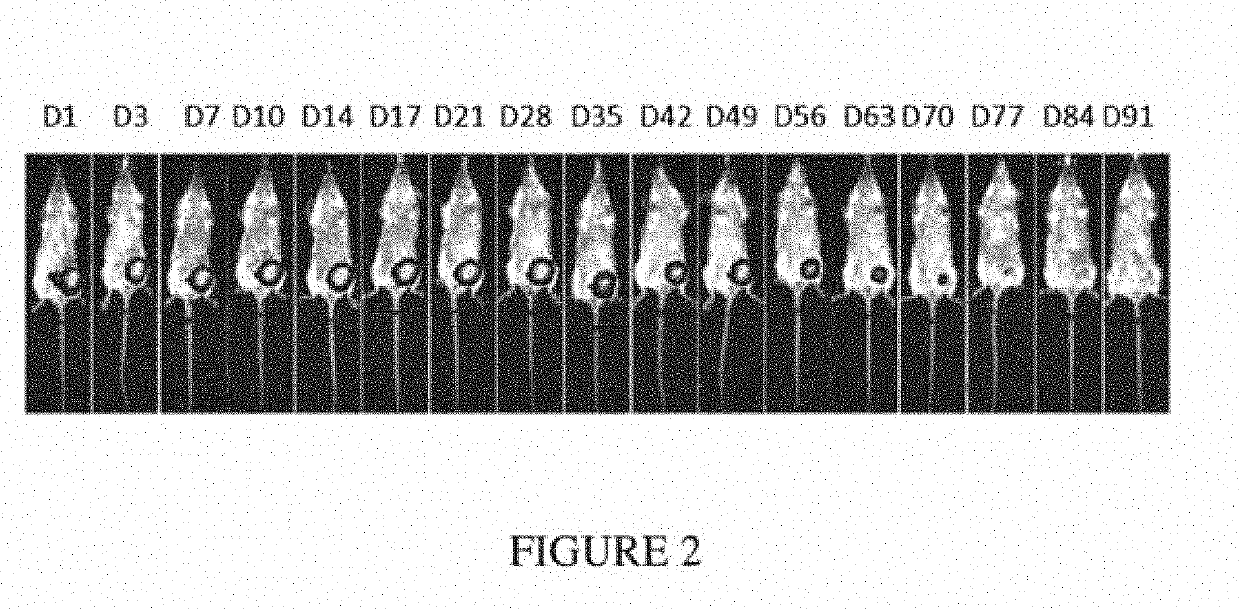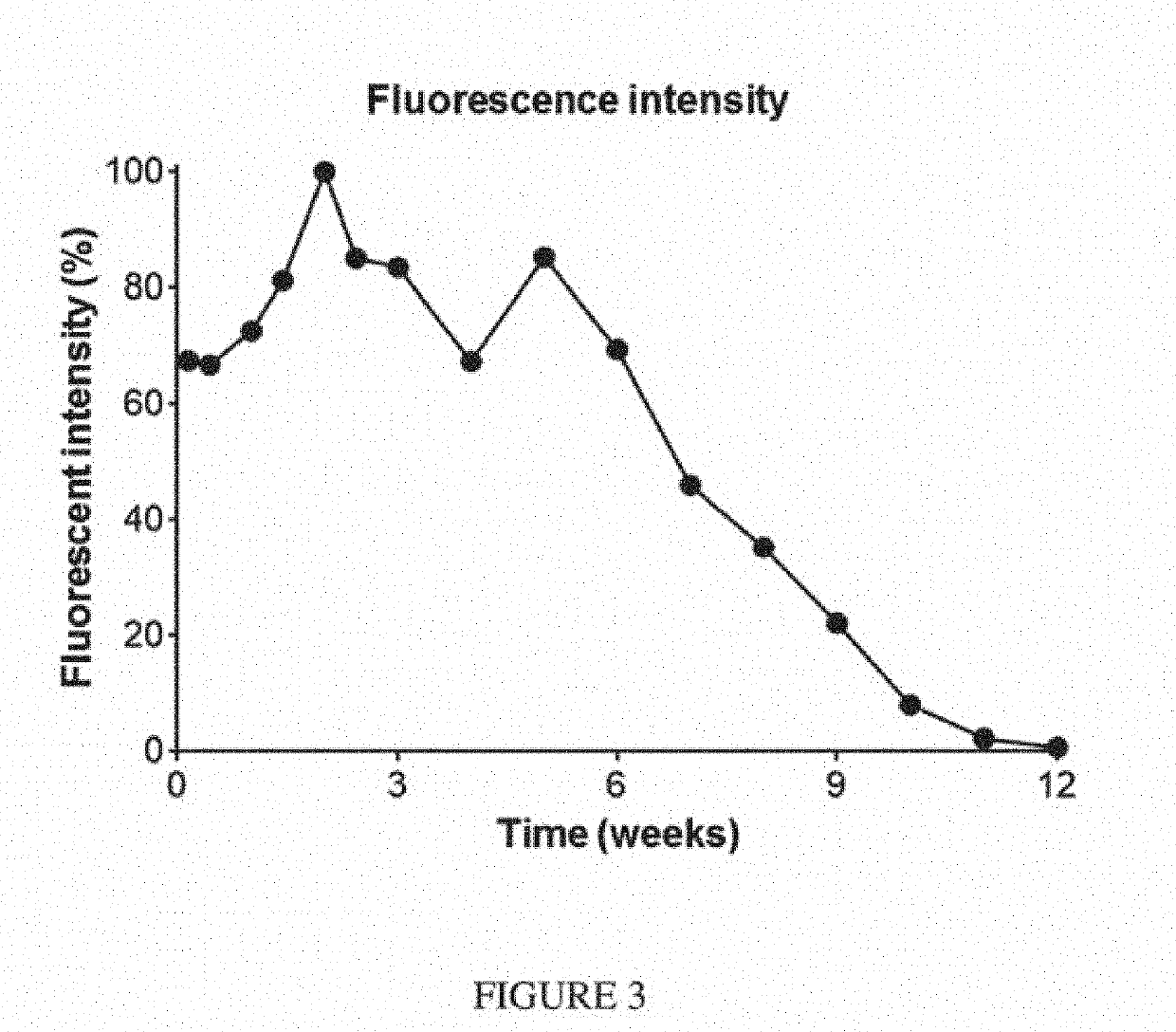Drug delivery compositions and uses thereof
a drug delivery and composition technology, applied in the direction of antibody medical ingredients, prosthesis, peptide/protein ingredients, etc., can solve problems such as adverse side effects, and achieve the effect of minimizing adverse side effects and preventing tumor recurrence and/or metastasis
- Summary
- Abstract
- Description
- Claims
- Application Information
AI Technical Summary
Benefits of technology
Problems solved by technology
Method used
Image
Examples
example 1
on of the Drug Delivery Compositions
[0772]A series of hydrogels were prepared to determine useful preparation methods and amounts of reagents required to construct the hydrogel system. Generally, the GLYCOSIL® hyaluronic acid and EXTRALINK® polyethylene glycol diacrylate cross-linker were combined in a TEFLON® mold. The hydrogel was formed upon allowing the combined reagents to stand for at least 1 hour. The storage modulus of the hydrogel was measured with a rheometer. These are summarized in Table 1.
TABLE 1GLYCOSIL ®EXTRALINK ®totalstorageHydrogel(w / v.)(w / v)volumemold sizemodulus12.5%; 200 μL10%; 50 μL250 μLDiameter: 8 mmHeight: 5 mm22.5%; 160 μL10%; 40 μL200 μLDiameter: 9 mmHeight: 3.2 mm32.0%; 160 μL10%; 40 μL200 μLDiameter: 9 mmHeight: 3.2 mm42.0%; 120 μL12.5%; 30 μL 150 μLDiameter: 9 mm~1500 PaHeight: 3.2 mm
Hydrogels were also prepared from alginate. To prepare hydrogel 5, 200 μL of sodium alginate solution (ca. 0.5-2.5% solution purchased from amsbio; product code: AMS.CSR-A...
example 2
ation Studies
[0776]Seven-week-old female Balb / c mice were inoculated orthotopically with 100,000 4T1-Luc2 syngeneic breast cancer cells (into the fourth mammary fat pad). After 10 days, mice were anesthetized, tumors were surgically resected, and device F was placed in the resection site. The majority of the mice were sacrificed due to relapse of the tumors. The presence of the composition in the surviving mouse was monitored via imaging over the course of 13 weeks (FIG. 2). This composition was stable and completely biodegraded after 13 weeks (FIG. 3).
[0777]Untreated mice harboring 4T1 tumors died from their primary tumors within seven weeks (median survival 40 d) of tumor inoculation, and surgical removal of the tumors provided little survival benefit (median survival 44 d), as mice succumbed to tumor recurrence and metastasis in this model (FIG. 4).
[0778]In an additional study, device F was placed by the mammary fat pad of five mice in which no tumors were inoculated or removed. ...
example 3
f Hydrogel Compositions Comprising Therapeutic Agents
[0779]Device 1 was prepared with FITC conjugated to 2′3′-cGAMP, ALEXA FLUOR® 405 dye conjugated to the anti-PD-1 antibody, and VIVOTAG® 680 dye conjugated to the IL-15sa. Confocal images were obtained, demonstrating that all three are distributed throughout the device (FIG. 9).
[0780]Device 2 was prepared with ALEXA FLUOR® 555 dye conjugated to the anti-PD-1 antibody and VIVOTAG® 680 dye conjugated to the IL-15sa. Confocal images were obtained, demonstrating that the anti-PD-1 antibody and IL-15sa are distributed throughout the device (FIG. 10).
PUM
 Login to View More
Login to View More Abstract
Description
Claims
Application Information
 Login to View More
Login to View More - R&D
- Intellectual Property
- Life Sciences
- Materials
- Tech Scout
- Unparalleled Data Quality
- Higher Quality Content
- 60% Fewer Hallucinations
Browse by: Latest US Patents, China's latest patents, Technical Efficacy Thesaurus, Application Domain, Technology Topic, Popular Technical Reports.
© 2025 PatSnap. All rights reserved.Legal|Privacy policy|Modern Slavery Act Transparency Statement|Sitemap|About US| Contact US: help@patsnap.com



